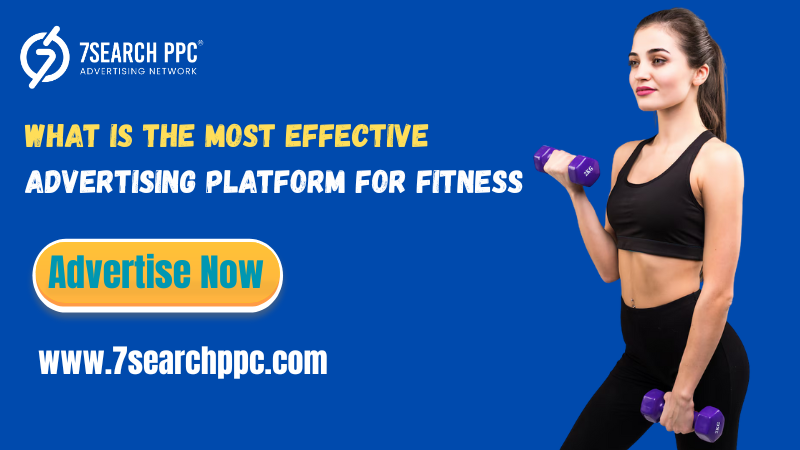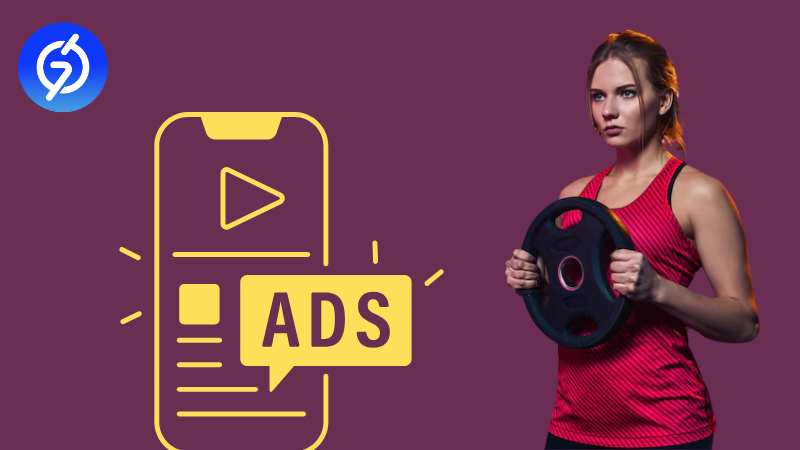In today’s health-conscious era, Fitness Advertising is more than just showcasing toned bodies and gym equipment. It’s about connecting with your audience’s goals, habits, and lifestyles in a way that drives real engagement and action. Whether you’re promoting a gym, personal training service, fitness app, or fitness product ad, knowing how to craft effective campaigns is crucial.
From visuals to placement to messaging, every detail matters. This blog outlines 7 essential tips for fitness advertising success that every marketer, beginner or pro, must keep in mind to stand out in a crowded marketplace.

Know Your Target Audience Inside Out
The first rule in successful fitness advertising is identifying and deeply understanding your target audience. Fitness goals vary widely—some want weight loss, others muscle gain, or perhaps mental well-being through yoga.
Key points:
Segment your audience: Beginners, intermediate, athletes, seniors, women-only groups, etc.
Consider demographics (age, location, gender) and psychographics (goals, challenges, lifestyle).
Use fitness-focused customer personas to tailor content and visuals.
Example:
If you’re targeting busy professionals, promote short, high-intensity workouts that fit into a lunch break. A fitness product ad for a smart jump rope could highlight time-saving benefits.
Leverage High-Quality Visuals and Video Content
Fitness is a highly visual industry. High-quality images and videos grab attention and motivate audiences. Authentic, real-world fitness results or live workouts resonate more than stock images.
Tips for visuals:
Use before-and-after photos (with consent).
Show workouts in progress, real gym settings, or product usage.
Include user-generated content to build trust.
Video ideas:
Quick demo videos for equipment or workout routines.
Client testimonials showing transformation journeys.
Live Q&A or training sessions.
Bonus Tip: Vertical video ads perform better on platforms like TikTok, Instagram Reels, and YouTube Shorts.
Focus on Benefits, Not Just Features
When writing fitness advertisements, it’s tempting to list product or service features. However, benefits are what truly connect with the customer.
Feature vs. Benefit:
Feature: “Our treadmill has a 15% incline.”
Benefit: “Burn more calories in less time with uphill sprints from home.”
Fitness advertising should answer questions like:
How will this product/service make the user’s life better?
Will it save time, improve strength, boost confidence, or enhance appearance?
Tip: Use testimonials and case studies to highlight real-life benefits. Let your current customers do the talking.
Use Strong Calls to Action (CTAs)
Every fitness product ad or campaign should guide the viewer to the next step. Without a strong Call To Action, even the best ad can fall flat.
Effective CTA examples:
“Start Your 7-Day Free Trial Today”
“Get Your Free Workout Plan Now”
“Shop the Latest in Home Fitness Gear”
“Join 1,000+ Members Getting Fit Today”
Placement Tips:
CTAs should be visible above the fold (especially on landing pages).
Use action verbs and urgency (e.g., “Don’t Miss Out!”).
Match the CTA with the stage of the buyer’s journey.
Optimize Ads for Mobile and Social Platforms
The majority of fitness advertising engagement happens on mobile, especially through platforms like Instagram, Facebook, TikTok, and YouTube.
Best practices:
Keep ad copy concise—mobile users scroll fast.
Use subtitles for video ads (most play without sound).
Include visual branding and logos early in the video.
Platform-specific tips:
Facebook & Instagram: Carousel ads work well for showcasing multiple products or exercises.
TikTok: Focus on trends, challenges, and authentic storytelling.
YouTube: Create skippable and non-skippable ad formats for different goals.
Pro Tip: Consider platforms like 7Search PPC for cost-effective, niche-targeted fitness advertisements that drive real ROI.
Leverage Influencers and User-Generated Content (UGC)
In fitness, authenticity and social proof matter. Influencers and everyday users add credibility and relatability to your brand.
UGC ideas:
Transformation stories
Unboxing videos of fitness products
Gym selfies wearing branded apparel
Testimonials of success using your product or program
Influencer strategies:
Micro-influencers (1K–10K followers) often have more engaged audiences.
Ensure alignment between the influencer’s values and your brand.
Consider affiliate deals or giveaways to boost exposure.
Stats: UGC-based ads have 4x higher click-through rates and cost 50% less per click than traditional ads.
Track Results and Refine Your Strategy
No matter how well-designed your fitness advertising is, you must track performance to know what’s working and what’s not.
Metrics to monitor:
CTR (Click-Through Rate)
Conversion Rate
ROAS (Return on Ad Spend)
Engagement metrics (likes, shares, comments)
Bounce Rate (for landing pages)
Tools to use:
Google Analytics
Meta Ads Manager (for Facebook/Instagram)
TikTok Ads Manager
7Search PPC dashboard for niche targeting insights
<<Start Your Campaign Today – Reach Your Ideal Audience Now!>>
A/B test differently:
Headlines
Images/videos
CTA buttons
Ad copy length
Target audience segments
Always iterate and optimize for better performance.

Conclusion: Make Every Rep Count in Your Fitness Ad Strategy
In a world saturated with gym advertising, only those with a clear strategy, compelling visuals, authentic messaging, and laser-focused targeting will truly succeed.
By implementing these 7 tips, you’ll not only attract your ideal audience but also convert them into long-term customers and community members. Whether you’re launching a fitness product ad, promoting a new personal training program, or running a gym membership campaign, these best practices will help you build strength where it matters most—in your marketing results.
FAQs About Fitness Advertising
What is the most effective platform for fitness advertising?
Ans. The best platform depends on your audience. Instagram and TikTok work well for visual, youth-focused campaigns, while Facebook is great for detailed targeting. Platforms like 7Search PPC offer niche, low-cost options for brands looking to scale affordably.
How much should I spend on a fitness product ad campaign?
Ans. Budget varies by goal, but a good starting point is $500–$1,000/month. Start small, track results, and scale your spending based on ROI and performance.
Are fitness influencer ads worth it?
Ans. Yes, especially if the influencer’s audience aligns with your target demographic. Micro-influencers tend to offer better engagement at a lower cost than larger ones.
What makes a great fitness advertisement?
Ans. A successful ad includes:
A clear target audience
High-quality visuals
Benefits-driven messaging
A strong CTA
Performance tracking
Can I advertise fitness products on Google or Facebook?
Ans. Yes, but be cautious with language. Avoid exaggerated claims like “lose 20 pounds in a week.” Always adhere to ad guidelines to avoid rejection or bans.

[…] your agency for real-world gym advertisement examples or clinic promotion case studies. Look at their past metrics—how much did leads increase? What […]